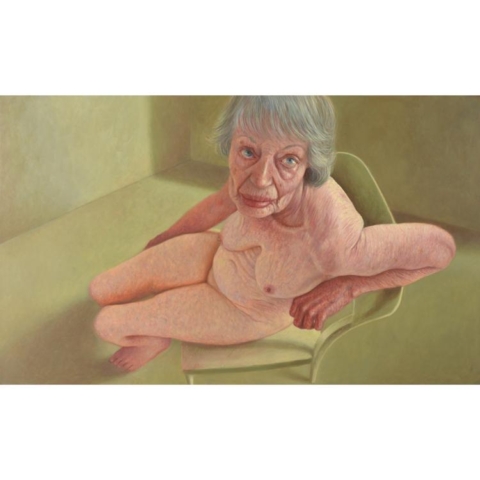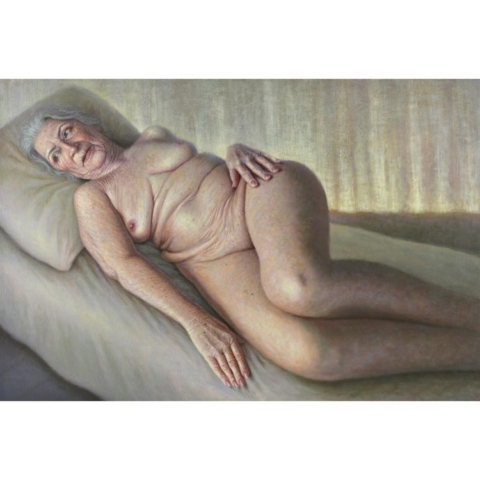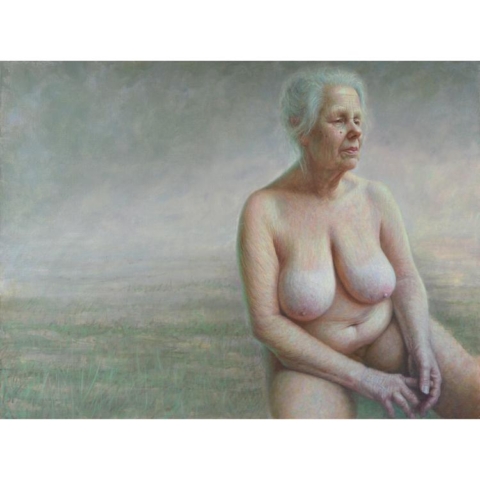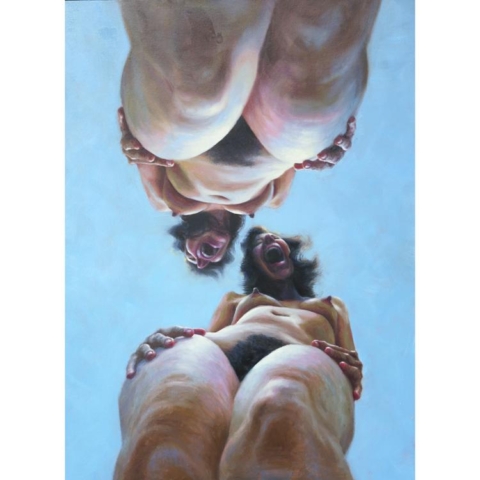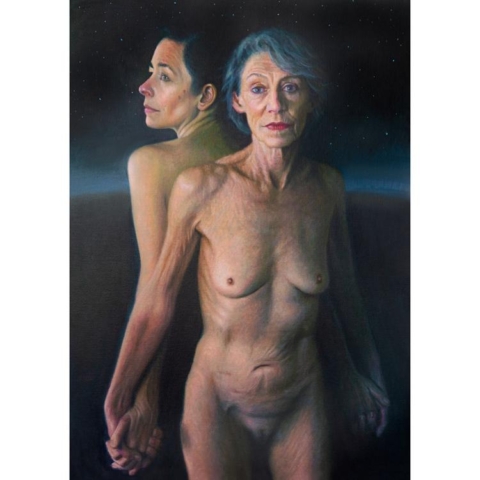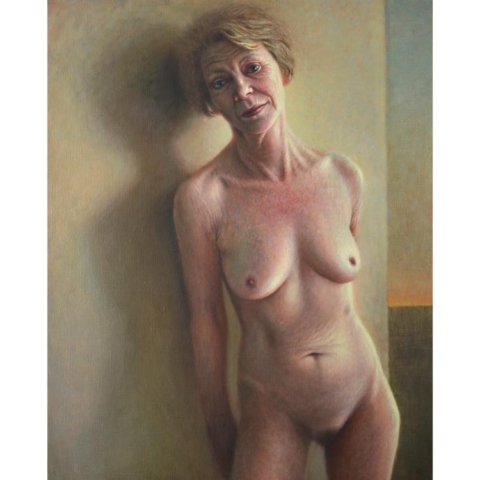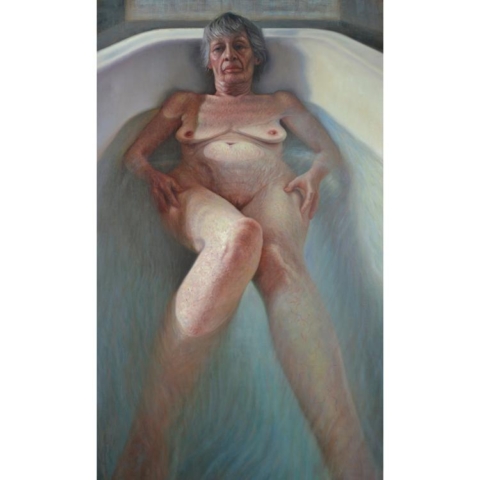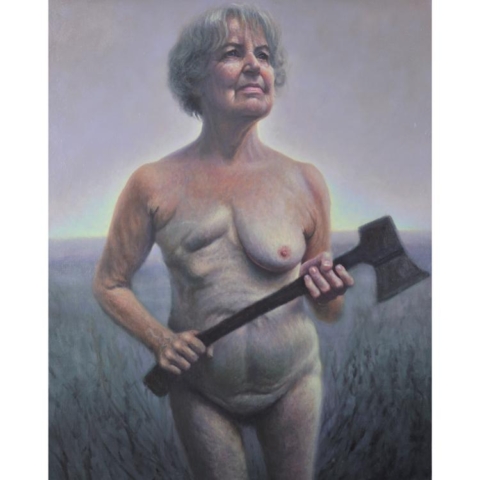Francien Krieg
Interview by Jimon
1-One word to describe Francien Krieg? Vulnerable
2-Where do you live and create? Netherlands in the countryside, village called Puiflijk, my studio is at my house.
3-Do you think that overall some kind of infatuation is essential to making good art? Infatuation or inspiration can be crucial for artists creating meaningful and impactful pieces of art. I find that I need an emotional connection to the subject to fully immerse myself in a piece of art. However, it’s a misconception that artists are always driven by extreme emotions and a surge of inspiration leading to the creation of masterpieces. After 25 years of painting, I still feel lost at times, but this feeling is exciting because it indicates that there is always more to learn. Regardless of the source of inspiration, the most important thing for an artist is to find what drives them and use it to fuel their creative process. With consistent work and dedication, artists can continue to develop their skills and produce impactful works of art.
4-Pablo Picasso once said “the chief enemy of creativity is good taste.” Would you agree with that? While I agree with this statement to a certain extent, I also know first-hand how challenging it can be to create something outside of conventional ideas of what is considered “good taste.” For 20 years, I have been painting a subject that I am deeply passionate about: naked old ladies, which I have titled “Precious Bodies.” While I have faced criticism for this series and it has not been widely embraced by the mainstream audience, I continue to create these works because I believe they offer something unique and thought-provoking to viewers.
5-Has making money changed the way you make art? Over the past three years, I have been fortunate enough to experience a significant increase in sales of my artwork. This has been a truly amazing experience for me, as even pieces that had struggled to sell over the past 20 years have suddenly found collectors and individuals who appreciate my work. Being able to make a good income from my art has made my life easier and has allowed me to fully focus on my passion. I have found that selling my art online since the start of the Covid pandemic has made it easier to reach a worldwide audience, without having to rely on physical galleries. Additionally, the NFT world has opened up a whole new avenue for me and the royalty system has made it more interesting and profitable for artists, while also allowing us to maintain more independence. However, the question of whether this increase in sales has changed my art is a valid one. To be honest, it has influenced my creative process to a certain extent. With a bigger flow of sales, I have been able to identify which type of works sell better than others. For example, during the Covid pandemic, I found that I could no longer work with older models and instead started creating little self-portraits as a sort of diary to express my emotions about the situation. To my surprise, people appreciated this series and could relate to my feelings, which motivated me to continue with it even after the pandemic situation had somewhat improved. Overall, while the increase in sales has had some impact on my artistic process, it has not compromised my vision or creative integrity.
6-Is your identity as an artist separate from your identity as a person? My identity is inseparable from who I am as a person. I believe that authenticity is key both in life and in art. That’s why I am an open book, both as an artist and as a person. My art is all about embracing vulnerability and celebrating the strength it takes to be vulnerable. I don’t mind making mistakes, whether it be in my personal life or in my art. After all, our flaws are what make us human and there is great beauty in that.
7-Your first experience with art as a child? As a child, my first experience with art was seeing the drawings my grandfather had made. He was not only an architect, but also a very skilled drawer. I remember being so impressed by his talent and the beauty of his drawings. It was a magical moment for me, and one that left a lasting impression on my young mind.
8-the future is; Unpredictable
9-What influences you as an artist? As a highly sensitive person, I find myself deeply affected by the world around me. Simply reading the newspaper can bring me to tears, and I am constantly moved by the ups and downs of daily life. The small moments of joy and happiness that come from spending time with my family, especially my two children and husband, give me a deep appreciation for the beauty of life.
10-What piece of art would you buy with unlimited money? I love many contemporary artists which I would love to buy , Karen Offutt I love her work and technique, a big inspiration, Will st John, Colleen Barry, Denis Sarazhin and Aron Wiesenfeld just to name a few.
11-Do you paint using live models or purely imagination? The process of creating is a personal journey that evolves over time. That journey has recently taken an unexpected turn. While I used to rely solely on my photographs of models as reference for my paintings, I have started exploring the use of artificial intelligence (AI) as a reference tool. At first, I was hesitant and even resistant to the idea of using technology in my art. But as I began to experiment and push my boundaries, I found myself embracing the possibilities that AI offered. Working with AI as a reference tool has opened up a world of endless possibilities. The technology allows me to explore new concepts and experiment with different styles that I would not have thought of before. It’s inspiring and exciting to see the different directions that my art can take. However, as with any new technology, there have been moments of frustration and even rejection. There are times when I feel like the AI is taking over my artistic process, and I worry that I’m losing touch with the personal connection and emotion that I aim to convey in my work. But I have learned that it’s all about finding a balance between my own artistic intuition and the potential that AI can bring.
12-Did you have any training for art or is it inherent? Attending the Royal Art Academy in 1992 was a pivotal moment in my life as an artist. I chose to study Monumental arts, which challenged me to think more conceptually. It was during this time that I began to experiment with a range of mediums, from installations to animation films and performance art. Studying at the academy gave me the opportunity to explore my creativity and develop my skills as an artist. I was able to collaborate with other artists, experiment with new techniques, and develop my own unique style. The academy also exposed me to a range of contemporary artists and art movements, which broadened my perspective and helped me to understand the role of art in society. Looking back on my time at the academy, I realize how much it shaped my artistic identity and helped me to discover the red line that runs through all of my works. While I no longer focus on installations and performance art, the conceptual thinking and creativity that I developed during those years still informs my approach to art today.
13-Do you remember the first piece of art that you created? It happened very early on. I remember creating a drawing of Pierrot crying when I was just a child, and even though I didn’t consider it “art” at the time, it was significant to me because it was the first time I felt that I had made something with emotion in it. This experience helped me to understand that art has the potential to have a deep impact on people and can evoke strong emotions. From that moment on, I was inspired to continue creating and exploring the possibilities of art. Although the drawing may not have been a masterpiece, it had a profound effect on me and helped to shape my artistic journey. This just goes to show that the power of art is not just in the finished product, but also in the emotions and experiences it can evoke for both the creator and the viewer.
14-How would you like to be seen as an artist years from now? I have always hoped that people would view my work as pure and honest. I want my paintings to evoke a feeling of recognition, especially when it comes to my depictions of older women, family portraits, and self-portraits. Of course, not everyone will connect with my art in the same way, and that’s okay. Everyone has their own unique perspective and experiences that shape how they view the world. But I hope that my paintings can touch people in a meaningful way, and perhaps even challenge their preconceptions about the world around them.
15-Do you have a place/person/thing that you visit for inspiration? My most inspirational moment of the day is not when I am actively pursuing creative endeavours, but rather when I am at my most relaxed state: just before I fall asleep, and when I first wake up in the morning. During these moments, I find myself dreaming of painting and new ideas. It is during these times that I feel most connected to my inner emotions and am able to focus on my thoughts in complete silence. It’s like the rest of the world fades away, leaving me alone with my thoughts and inspirations.
16-If you could have dinner with 3 artists living/dead who would be at your table? Kathy Kollwitz , Frida Kahlo and Jenny Saville, three very inspiring feminist women who I feel connected with.
17-How would someone find you on social media? Instagram: francienkrieg
18-Please name the first thing that comes to your mind while reading the following:
Art: life
Food: pleasure
Sports: don’t like it
Politics: puppet show
Poor:
God: war
Rich: doing what you love
Luxury; not important
Sex: overrated
Picasso:
Religion : art
Back to List